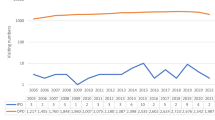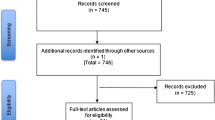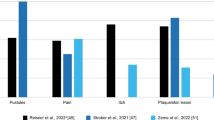Abstract
Background and Objective
Pustular psoriasis is a chronic and recurrent autoimmune disease, although little is known about the disease burden of pustular psoriasis in China. We analyzed the characteristics and disease burdens of patients from Beijing who had generalized pustular psoriasis (GPP) or palmoplantar pustulosis (PPP).
Methods
This multicenter retrospective cohort study used a regional electronic health database that covered 30 public hospitals in Beijing. From June 2016 to June 2021, all patients with a diagnosis of GPP, PPP, or psoriasis vulgaris (PV) were identified by International Statistical Classification of Diseases and Related Health Problems, 10th Revision codes. The GPP and PPP cohorts were separately matched with patients with PV in a 3:1 ratio for comparisons. Demographic data, clinical characteristics, healthcare resource utilization, and costs were collected. Descriptive and comparative analyses were used to compare the cohorts.
Results
There were 744 patients with GPP (46.8% men; age 42.14 ± 21.47 years) and 4808 patients with PPP (35.5% men; age 51.65 ± 16.12 years); 14.5% of patients with GPP had concomitant PV and 7.5% of patients with PPP had concomitant PV. Relative to matched patients with PV, patients with GPP had a higher prevalence of erythrodermic psoriasis (5.9% vs 0.4%, p < 0.0001), psoriatic arthritis (3.1% vs 1.5%, p = 0.007), and organ failure (1.1% vs 0.2%, p = 0.002). Relative to matched patients with PV, patients with PPP had a higher prevalence of cerebrovascular disease (4.7% vs 1.2%, p < 0.0001), thyroid dysfunction (3.9% vs 3.3%, p = 0.035), and type 2 diabetes mellitus (6.8% vs 5.9%, p = 0.030). More patients with GPP than patients with PV received systemic non-biological agents (27.9% vs 3.3%, p < 0.0001) and biologic agents (4.8% vs 2.0%, p = 0.010). More patients with PPP than patients with PV received topical agents (50.9% vs 34.7%, p < 0.0001) and systemic non-biological agents (17.8% vs 2.7%, p < 0.0001). More patients with GPP than patients with PV required inpatient hospitalization (22.0% vs 7.8%, p < 0.0001). Hospitalization stay was longer in patients with GPP than patients with PV (11.72 ± 0.45 vs 10.38 ± 0.45 days, p = 0.022). More patients with PPP than patients with PV had emergency visits (16.3% vs 12.8%, p < 0.0001). The GPP and PPP cohorts and their matched PV cohorts had no significant differences in costs. However, patients with PPP had lower outpatient costs than patients with PV (368.20 ± 8.19 vs 445.38 ± 5.90 Chinese Yuan per patient per month, p < 0.0001).
Conclusions
Patients from Beijing with GPP and PPP had higher disease burdens than matched PV cohorts, including the prevalence of comorbidities, healthcare resource utilization, and medication burden. However, the economic burden of pustular psoriasis was similar to that of PV. Practical and specific therapies are needed to reduce the burdens of pustular psoriasis.


Similar content being viewed by others
References
Twelves S, Mostafa A, Dand N, et al. Clinical and genetic differences between pustular psoriasis subtypes. J Allergy Clin Immunol. 2019. https://doi.org/10.1016/j.jaci.2018.06.038.
Misiak-Galazka M, Wolska H, Rudnicka L. What do we know about palmoplantar pustulosis? J Eur Acad Dermatol Venereol. 2017. https://doi.org/10.1111/jdv.13846.
Burden AD, Choon SE, Gottlieb AB, et al. Clinical disease measures in generalized pustular psoriasis. Am J Clin Dermatol. 2022. https://doi.org/10.1007/s40257-021-00653-0.
Liang L-L, Langenbrunner J. The long march to universal coverage: lessons from China. UNICO study series; no. 9. Washington, DC: World Bank; 2013.
Guo ZH. Hospital management. Beijing: People’s Health Publishing House; 1990.
Sun Y, Gregersen H, Yuan W. Chinese health care system and clinical epidemiology. Clin Epidemiol. 2017. https://doi.org/10.2147/CLEP.S106258.
Writing Committee Expert Group. Diagnosis and treatment of pustular psoriasis: a Chinese expert consensus statement (2022). Chin J Dermatol. 2022. https://doi.org/10.35541/cjd.20210698.
Augey F, Renaudier P, Nicolas JF. Generalized pustular psoriasis (Zumbusch): a French epidemiological survey. Eur J Dermatol. 2006. https://doi.org/10.1684/ejd.2006.0003.
Baker H, Ryan TJ. Generalized pustular psoriasis: a clinical and epidemiological study of 104 cases. Br J Dermatol. 1968. https://doi.org/10.1111/j.1365-2133.1968.tb11947.x.
Noe MH, Wan MT, Mostaghimi A, et al. Evaluation of a case series of patients with generalized pustular psoriasis in the United States. JAMA Dermatol. 2022. https://doi.org/10.1001/jamadermatol.2021.4640.
Choon SE, Lai NM, Mohammad NA, et al. Clinical profile, morbidity, and outcome of adult-onset generalized pustular psoriasis: analysis of 102 cases seen in a tertiary hospital in Johor. Malaysia Int J Dermatol. 2014. https://doi.org/10.1111/ijd.12070.
Kharawala S, Golembesky AK, Bohn RL, et al. The clinical, humanistic, and economic burden of generalized pustular psoriasis: a structured review. Expert Rev Clin Immunol. 2020. https://doi.org/10.1080/1744666X.2019.1708193.
Zelickson BD, Muller SA. Generalized pustular psoriasis: a review of 63 cases. Arch Dermatol. 1991. https://doi.org/10.1001/archderm.127.9.1339.
Morita A, Kotowsky N, Gao R, et al. Patient characteristics and burden of disease in Japanese patients with generalized pustular psoriasis: results from the Medical Data Vision claims database. J Dermatol. 2021. https://doi.org/10.1111/1346-8138.16022.
Hanna ML, Singer D, Valdecantos WC. Economic burden of generalized pustular psoriasis and palmoplantar pustulosis in the United States. Curr Med Res Opin. 2021. https://doi.org/10.1080/03007995.2021.1894108.
Reisner DV, Johnsson FD, Kotowsky N, et al. Impact of generalized pustular psoriasis from the perspective of people living with the condition: results of an online survey. Am J Clin Dermatol. 2022. https://doi.org/10.1007/s40257-021-00663-y.
Gooderham MJ, Van Voorhees AS, Lebwohl MG. An update on generalized pustular psoriasis. Expert Rev Clin Immunol. 2019. https://doi.org/10.1080/1744666X.2019.1648209.
Maehara Lde S, Mariano MM, Góis AF, et al. Acute respiratory distress syndrome as a complication of generalized pustular psoriasis. An Bras Dermatol. 2011. https://doi.org/10.1590/s0365-05962011000300026.
Jin H, Cho HH, Kim WJ, et al. Clinical features and course of generalized pustular psoriasis in Korea. J Dermatol. 2015. https://doi.org/10.1111/1346-8138.12863.
Okubo Y, Kotowsky N, Gao R, et al. Clinical characteristics and health-care resource utilization in patients with generalized pustular psoriasis using real-world evidence from the Japanese Medical Data Center database. J Dermatol. 2021. https://doi.org/10.1111/1346-8138.16084.
Löfvendahl S, Norlin JM, Schmitt-Egenolf M. Economic burden of generalized pustular psoriasis in Sweden: a population-based register study. Psoriasis. 2022. https://doi.org/10.2147/PTT.S359011.
Lu J, Shi Y. A review of disease burden and clinical management for generalized pustular psoriasis in China. Expert Rev Clin Immunol. 2022. https://doi.org/10.1080/1744666X.2022.2118716.
Ji S. A meta-analysis of the efficacy of cyclosporine A, methotrexate and acitretin in the treatment of generalized pustular psoriasis. J SDFMU SD Acad Med Sci. 2018. https://doi.org/10.3969/j.issn.1004-7115.2018.09.004.
Misiak-Galazka M, Wolska H, Galazka A, et al. General characteristics and comorbidities in patients with palmoplantar pustulosis. Acta Dermatovenerol Croat. 2018.
Brunasso AM, Massone C. Can we really separate palmoplantar pustulosis from psoriasis? J Eur Acad Dermatol Venereol. 2010. https://doi.org/10.1111/j.1468-3083.2010.03648.x.
Giménez-García R, Sánchez-Ramón S, Cuellar-Olmedo LA. Palmoplantar pustulosis: a clinicoepidemiological study. The relationship between tobacco use and thyroid function. J Eur Acad Dermatol Venereol. 2003. https://doi.org/10.1046/j.1468-3083.2003.00510.x.
Kim DH, Lee JY, Cho SI, et al. Risks of comorbidities in patients with palmoplantar pustulosis vs patients with psoriasis vulgaris or pompholyx in Korea. JAMA Dermatol. 2022. https://doi.org/10.1001/jamadermatol.2022.1081.
Trattner H, Blüml S, Steiner I, et al. Quality of life and comorbidities in palmoplantar pustulosis: a cross-sectional study on 102 patients. J Eur Acad Dermatol Venereol. 2017. https://doi.org/10.1111/jdv.14187.
Hu SC, Yuan SF, Chen GS, et al. Increased incidence of ischaemic heart disease and cerebrovascular disease in psoriasis patients with depression: a nationwide retrospective cohort study. J Eur Acad Dermatol Venereol. 2019. https://doi.org/10.1111/jdv.15616.
Sarıkaya Solak S, Kara Polat A, Kilic S, et al. Clinical characteristics, quality of life and risk factors for severity in palmoplantar pustulosis: a cross-sectional, multicentre study of 263 patients. Clin Exp Dermatol. 2022. https://doi.org/10.1111/ced.14829.
Noe MH, Wan MT, Mostaghimi A, et al. Evaluation of a case series of patients with palmoplantar pustulosis in the United States. JAMA Dermatol. 2022. https://doi.org/10.1001/jamadermatol.2021.4635.
Misiak-Galazka M, Zozula J, Rudnicka L. Palmoplantar pustulosis: recent advances in etiopathogenesis and emerging treatments. Am J Clin Dermatol. 2020. https://doi.org/10.1007/s40257-020-00503-5.
Miyazaki C, Sruamsiri R, Mahlich J, et al. Treatment patterns and healthcare resource utilization in palmoplantar pustulosis patients in Japan: a claims database study. PLoS ONE. 2020. https://doi.org/10.1371/journal.pone.0232738.
Raposo I, Torres T. Palmoplantar psoriasis and palmoplantar pustulosis: current treatment and future prospects. Am J Clin Dermatol. 2016. https://doi.org/10.1007/s40257-016-0191-7.
Wang H, Jin H. Update on the aetiology and mechanisms of generalized pustular psoriasis. Eur J Dermatol. 2021. https://doi.org/10.1684/ejd.2021.4047.
Brunasso AM, Puntoni M, Aberer W, et al. Clinical and epidemiological comparison of patients affected by palmoplantar plaque psoriasis and palmoplantar pustulosis: a case series study. Br J Dermatol. 2013. https://doi.org/10.1111/bjd.12223.
Strober B, Kotowsky N, Medeiros R, et al. Unmet medical needs in the treatment and management of generalized pustular psoriasis flares: evidence from a Survey of Corrona Registry Dermatologists. Dermatol Ther (Heidelb). 2021. https://doi.org/10.1007/s13555-021-00493-0.
Bachelez H, Choon SE, Marrakchi S, et al. Inhibition of the interleukin-36 pathway for the treatment of generalized pustular psoriasis. N Engl J Med. 2019. https://doi.org/10.1056/NEJMc1811317.
Karmacharya P, Chakradhar R, Ogdie A. The epidemiology of psoriatic arthritis: a literature review. Best Pract Res Clin Rheumatol. 2021. https://doi.org/10.1016/j.berh.2021.101692.
Prinz JC, Choon SE, Griffiths CEM, et al. Prevalence, comorbidities and mortality of generalized pustular psoriasis: a literature review. J Eur Acad Dermatol Venereol. 2023. https://doi.org/10.1111/jdv.18720.
Acknowledgments
Our sincere gratitude to Mr. Lin Mei from the Beijing Municipal Health Big Data and Policy Research Center for his help in data acquisition and the interpretation of some data.
Author information
Authors and Affiliations
Corresponding author
Ethics declarations
Funding
This study was supported in part by the CAMS Innovation Fund for Medical Sciences No. 2021-I2M-1-059, National High Level Hospital Clinical Research Funding (2022-PUMCH-B-092), and National Natural Science Foundation of China (82073450).
Conflicts of Interest/Competing Interests
Hai-Meng Wang, Jia-Ming Xu, and Hong-Zhong Jin have no conflicts of interest that are directly relevant to the content of this article.
Ethics Approval
This study was reviewed and approved by the Institutional Review Board of Peking Union Medical College Hospital; approval #JS-3434D.
Consent to Participate
The requirement for informed patient consent was waived because of the anonymous nature of the data.
Consent for Publication
The requirement for informed patient consent was waived because of the anonymous nature of the data.
Availability of Data and Material
The datasets generated and analyzed during the current study are available from the corresponding author on reasonable request.
Code Availability
Not applicable.
Authors’ Contributions
HMW and HZJ provided the concept and design of the retrospective study. HMW was responsible for the data acquisition, data analysis, and interpretation. HMW and JMX provided the tables and figures in the article. HMW and JMX drafted the manuscript, which was supervised by HZJ. All authors gave their final approval of the version to be published.
Rights and permissions
Springer Nature or its licensor (e.g. a society or other partner) holds exclusive rights to this article under a publishing agreement with the author(s) or other rightsholder(s); author self-archiving of the accepted manuscript version of this article is solely governed by the terms of such publishing agreement and applicable law.
About this article
Cite this article
Wang, HM., Xu, JM. & Jin, HZ. Characteristics and Burdens of Disease in Patients from Beijing with Generalized Pustular Psoriasis and Palmoplantar Pustulosis: Multicenter Retrospective Cohort Study Using a Regional Database. Am J Clin Dermatol 24, 991–1002 (2023). https://doi.org/10.1007/s40257-023-00807-2
Accepted:
Published:
Issue Date:
DOI: https://doi.org/10.1007/s40257-023-00807-2




